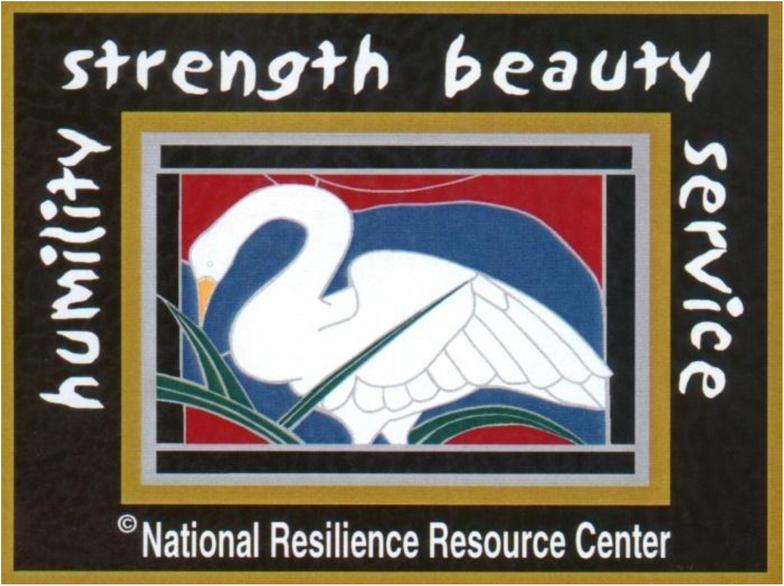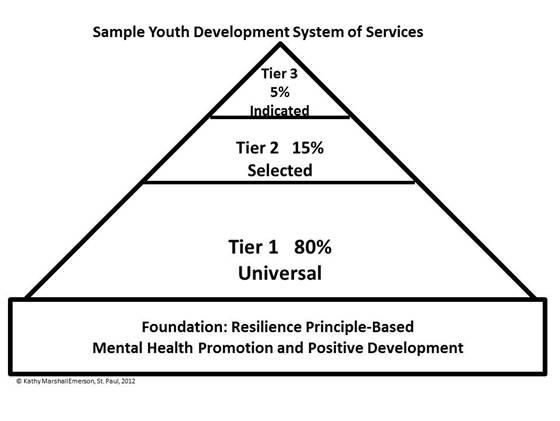National Resilience Resource Center
The level of scientific research and evidence educators typically expect does not yet exist regarding principles in education. The understanding called Three Principles developed in community settings without a university home-base. It is just beginning to emerge in education globally.
Therefore, it is wise to discern how the principles may be aligned with, and complimentary to, existing highly respected, well researched contemporary educational initiatives such as those samples discussed below. Contact NRRC for consultation regarding alignment with other programs.
Social and Emotional Learning (SEL) is implemented globally. The Collaborative for Academic, Social and Emotional Learning, CASEL, directed by Dr. Roger Weissberg, has been America’s leading organization advancing the development of academic, social and emotional competence for all students for more than 20 years. Daniel Goleman was a co-founder. CASEL’s mission is “to help make evidence-based social and emotional learning an integral part of education from preschool through high school.” Visit CASEL for solid research articles, videos, an online library and much more. These are sample resources from CASEL:
- 2013 CASEL Guide to Effective Social and Emotional Learning Programs including criteria and listing of SELect Programs for preschool and elementary
- MINDUp, the Hawn Foundation’s SELect elementary program
The key questions to ask: Is the approach to teaching SEL in your school primarily cognitive and intellectual? Do students discover they actually create all social and emotional experiences with their own thinking? How could the principles complement SEL?
In 1992-93 the Fetzer Institute asked Parker Palmer to propose a long-term project to aid in the spiritual formation of teachers. What started as a quiet experiment in sustaining the inner life of public educators has become an educational nonprofit fostering courage and renewal across professions.
Today Center for Courage and Renewal programs excel at guiding teachers through a personal and professional process with a deep focus on answering the question, “Who am I?” Once that life question is resolved participating teachers genuinely bring love into the classroom as Dr. Debbie Stanley describes.
For principle-based educators in school systems where Palmer’s approach is established, these questions may be helpful: Have all staff members received the Courage to Teach training in enough depth to be transforming both classroom teaching and personal renewal? Are time away, costs and sensitivity about personal renewal obstacles? Do teachers and students recognize their own states of mind? Are they aware their own thinking causes them to experience the “divided self”? How might the Courage program be effectively aligned with the simplicity of the principles to even more effectively enhance teacher renewal and student transformation?
In 2009 American schools of education from Harvard, Stanford, Penn State, Columbia, and Virgina, Wisconsin, Michigan and George Washington universities joined CASEL and the American Psychological Association in sponsoring a groundbreaking conference, Educating World Citizens for the 21st Century. This Mind and Life Institute XIX with the Dalai Lama facilitating, convened 1,000 educators, scientists and contemplatives exploring strategies for cultivating a healthy, mind, brain and heart in schools. World-renowned neuroscientist Dr. Richard Davidson worked closely with the Dalai Lama to study the neuroscience involved.
Davidson founded the Center for Investigating Healthy Minds at the University of Wisconsin-Madison Waisman Center. CIHM is a global leader researching how to understand the mind and emotions, and to nurture human well-being. CIHM is developing tools cultivating well-being and explaining that well-being can be learned. A small pilot study indicates teacher stress can be reduced with simple mindfulness activity; in 2014 CIHM received a $1.5 million U.S. Department of Education grant to research the impact of mindfulness in classrooms.
The western secular practice of mindfulness and related research with leadership of Jon Kabbat-Zinn and others has exploded. As a result, there is a plethora of mindfulness programs being developed, implemented and researched. University of California Berkeley Greater Good Science Center provides 2014 Research Highlights from studies of mindfulness programs for children and youth in schools and other settings. At this time there are few researched and commercially available mindfulness K-12 curricula. MINDUp is one example. A 2012 article by Dr. Davidson and 11 other Mind Life Education Research Network scientists discusses prospects for the development of sustainable American education mindfulness curriculum.
To competently articulate the value and ease of integrating understanding of the principles in schools with existing mindfulness program practices, study Davidson’s scientific discussion of the four constituents of well-being. These are resilience, generosity, a background glow of positive emotion or sense of innate goodness, and present moment attention described as being in the grove or flow. See Davidson’s Well-being as a Skill and his contributions to the World Health Organization’s 2015 World Happiness Report . While this important researcher is not familiar with the principles, his work evidences the need for outcomes produced by understanding the principles.
Dr. Parker Palmer traces the roots of this work to personal depression and his journey to self-renewal with support from select individuals. Life-long Quaker Clearness Committee experiences also contributed to Palmer’s development of the highly effective Circles of Truth approach designed for teacher renewal.
Considerations for integrating the principles into schools with established mindfulness programs may include: Mindfulness and principles education both aim to have students and teachers experience a calm mind. Mindfulness research documents that improved quality of thinking (mental activity) enhances the brain neurologically.
As an educator grounded in the principles you know it is possible to teach both students and adults how they operate from the inside out. A calm mind, peaceful feelings, improved behaviors are natural outcomes of your teaching. Pertinent questions in your school may be:
- Can the simplicity of teaching the principles give wider impact to the joint effort?
- Can simple language, visuals, and stories of the principles independently compliment what happens in mindfulness lessons?
- Are administrators more willing to be rapidly introduced to the principles rather than making a perceived larger time commitment to mindfulness practices?
- Can a positive alliance be formed with mindfulness leaders in your school?
Be aware Mayo Clinic’s Dr. Amit Sood is also developing a promising and researched educational program for school teachers and students with unusually brief, simple meditation. The program rests on an understanding of spirituality, resilience research, stress, happiness, neuroscience and more. A series of animated teaching tools, such as "A Very Happy Brain," feature an engaging character named Broody. Understanding the principles could be a practical foundation for this emerging work if it comes to your school.
One of the largest educational interventions in the American education machine, PBIS, was introduced in 1997 as part of the Individuals with Disabilities Act. By 2012 more than 16,000 school teams were trained in the PBIS implementation framework (especially in Tier I or primary prevention). All 50 states are involved. PBIS has also spread globally.
For basic orientation, see George Sugai, Co-Director of the U.S. Department of Education’s National Technical Assistance Center on PBIS, and Brandi Simonsen’s history of PBIS. They explain, “PBIS is defined as a framework for enhancing the adoption and implementation of a continuum of evidence-based interventions to achieve academically and behaviorally important outcomes for all students... . As a framework, the emphasis is on a process or approach, rather than a curriculum, intervention, or practice. The continuum notion emphasizes how evidence or research based behavioral practices are organized within a multi-tiered system of support, also called response-to-intervention.” For more detail see the Technical Assistance Center and one sample publication, Advancing Education Effectiveness: Interconnecting School Mental Health and School-Wide Positive Behavior Support.
For educators who understand the principles and are in schools with PBIS, there can be a meaningful way to position the principles as an essential foundation for PBIS. NRRC has assisted school communities integrating the principles system wide for many years.
One special education director, trained in both PBIS and the principles, understood PBIS focuses on managing students’ external behaviors and the principles teach staff members and students about the root causes of behavior from the inside out. For this administrator both approaches could work together to bring better results than PBIS alone.
Another district developed a local PBIS tiered framework resting on the foundation of the principles. NRRC’s sample generic visual incorporates PBIS, the principles, resilience research and other relevant evidence:
Find Resources
- Special Interest Resources
Fitting In With "Other Programs"
Susan Wolfram, Special Education Teacher and NRRC Facilitator, describes the principles as the "missing piece" in her
thirty years of teaching.
In looking for a fit between the principles and established programs, consider these questions:
- What is similar?
- How could the principles complement or enhance each program?
- What is already in your school?
- What essentials seems to be missing in these well known efforts?
 | ||||||
Social and Emotional Learning
Courage to Teach
Mindfulness Education
Positive Behavioral Intervention Supports (PBIS)
No part of this site or content may be copied, reproduced, republished, uploaded, posted, publicly displayed, translated, transmitted or distributed in any way (including "mirroring") to any other computer, server, Web site or other medium for publication or distribution or for any commercial use, without NRRC's express prior written consent.



